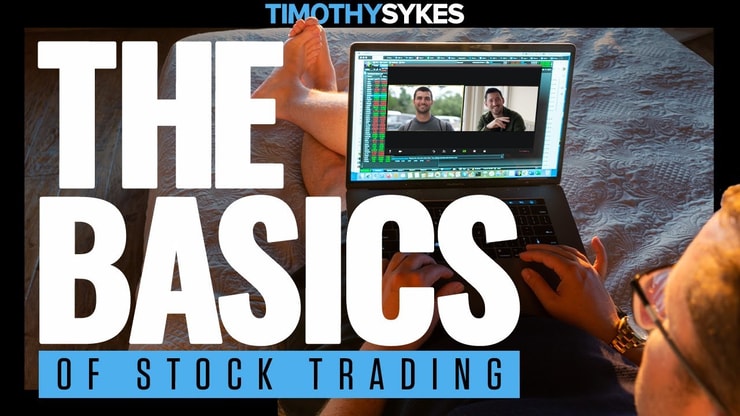Stepping into the world of investing, you’ll probably encounter the term “S&P 500” thrown around a lot by investors on Wall Street and experts like Vanguard and Berkshire Hathaway. It’s essential for beginners to grasp its importance in the investment arena and learn how to make it work for them.
The S&P 500 is a reliable barometer of the U.S. economy, constituting companies with hefty market caps. Understanding it can serve as a sound basis for developing a diversified portfolio that cushions against market volatility and taps into a broad array of sectors.
Investing in the S&P 500 is not a one-size-fits-all strategy. It requires a keen mind, the right tools, and confidence, along with a pinch of advice from financial management professionals.
These guidelines aren’t for traders like me. In my 20-plus years of experience, I’ve found that the type of banking and investment advice that picks recommendations like the S&P 500 has its reasons…
But if you follow the steps of conservative trading with accuracy you can make a lot more in the way of compensation! I’m a fan of this latter strategy — but full disclosure, I learned how to trade through many years of trial and error. If you’re the type that questions day trading, this article is for you.
Even if you aren’t, learning more about the market is always a good thing. Read on for examples of S&P 500 index funds, their links with Nasdaq and NYSE leading stocks, and knowledge you can take to the stock brokers.
Table of Contents
- 1 S&P 500 Index Defined
- 2 What Are the Companies Listed in the S&P 500 Index?
- 3 How Much Does It Cost to Invest in the S&P 500?
- 4 How to Invest in the S&P 500 in 2023?
- 5 What Are the Advantages of Investing in the S&P 500?
- 6 What Are the Disadvantages of Investing in the S&P 500?
- 7 Things you Need to Know Before Investing in the S&P 500
- 8 Investing in the S&P 500: 5 Tips to Do It Right
- 9 Key Takeaways
S&P 500 Index Defined

2025 Millionaire Media, LLCIn simple terms, the S&P 500 is a stock market index that represents the market performance of 500 large U.S. companies. The index is weighted by market capitalization, meaning bigger companies like Alphabet or Tesla (TSLA) have more influence on the index’s performance than smaller ones.
Understanding the S&P 500’s composition provides valuable insights into the American stock market. For instance, sectors like healthcare, technology, energy, and finance dominate, reflecting the diverse industries that propel the U.S. economy.
The S&P 500 is a prime example of a stock market index, a tool that investors and analysts use to track the performance of a specific group of stocks. Indices can provide a snapshot of the market’s overall health and direction. They can be based on various factors, such as company size, industry, market sector, or even the national economy. If you’re interested in learning more about different types of indices and how they work, check out our guide on stock market indices.
What Are the Companies Listed in the S&P 500 Index?
Think of the giants on the stock market — companies like Apple (AAPL), Amazon (AMZN), NVIDIA (NVDA), and Alphabet (parent company of Google). These are the behemoths whose share price movements can sway the S&P 500.
The companies are distributed across eleven sectors, giving investors exposure to a gamut of industries. Some sectors, like technology, tend to have more weight in the index due to their large market caps. The beauty of investing in the S&P 500 is getting a taste of these diverse sectors in one swoop.
The S&P 500 is one of many indices that investors use to track market trends. Another widely watched index is the Dow Jones Industrial Average, which consists of 30 large, publicly-owned companies based in the United States. Understanding the differences between these indices can help you make more informed investment decisions. For a closer look at the Dow and its constituents, read our comprehensive guide on the Dow Jones Industrial Average.
More Breaking News
- BigBear Stock Faces Challenges Amid Lawsuits
- Will FARO Technologies Surpass Expectations?
- Why CleanSpark Inc. Stock is Rising Today
How Much Does It Cost to Invest in the S&P 500?
When you decide to invest in the S&P 500, you’ll need to account for the expense ratio. ETFs and index funds that track the S&P 500, such as Vanguard’s VOO, typically have low expense ratios, often below 0.1%. However, costs can escalate when you consider brokerage account fees, potential commissions, and other associated costs.
On top of fees, consider the initial minimum investment criteria. Vanguard, for instance, has a minimum investment requirement for some of its mutual funds. While these costs may seem small in isolation, they can add up and impact your investment performance over time.
How to Invest in the S&P 500 in 2023?
Investing in the S&P 500 in 2023 is a breeze, thanks to advancements in fintech services. You can choose from traditional brokerages, robo-advisors like Wealthfront, or an app-based service. They all offer different types of investment accounts, like IRA, Roth IRA, and regular savings accounts.
To invest, open a brokerage account, deposit money, and select the S&P 500 product that suits your investment strategy. Most beginners prefer ETFs or index funds due to their simplicity and lower risk compared to individual stocks. Don’t forget to check the expense ratio and any other fees.
What Are the Advantages of Investing in the S&P 500?

2025 Millionaire Media, LLCDiversification is a significant advantage of investing in the S&P 500. With a single fund, you gain exposure to 500 different companies from various sectors, reducing the impact of any single stock’s poor performance.
Another benefit is the relatively lower risk associated with investing in an index fund compared to individual stocks. You also stand to gain from the returns of the index and dividends paid out by the companies within the S&P 500.
Finally, the S&P 500 has historically provided solid returns over the long term. Despite recessions and market downturns, the S&P 500 has always bounced back, rewarding patient investors.
What Are the Disadvantages of Investing in the S&P 500?
While the S&P 500 has many advantages, it’s not without its drawbacks. The index is heavily weighted towards the largest U.S. companies, so it might not provide the level of diversification some investors seek.
Moreover, while the S&P 500 can deliver solid returns, in most cases it’s unlikely to deliver “home run” results. Those come with higher-risk investments.
Finally, investing in the S&P 500 means going with the flow of the market. If the U.S. stock market crashes, so does your investment. And while historical data shows the market will likely recover, there’s never any guarantee.
Things you Need to Know Before Investing in the S&P 500
Investing in the S&P 500 should be a strategic decision, made with knowledge and understanding. Here are some factors to consider:
- Market volatility: Despite its diversity, the S&P 500 can still be subject to fluctuations in response to broader economic events or sector-specific downturns.
- Liquidity: Shares in S&P 500 funds are generally very liquid, meaning they can be bought and sold quickly. However, keep in mind that constant trading can increase costs and tax implications.
- Returns and dividends: While the S&P 500 can provide strong returns over the long term, it’s important to remember that past performance is no guarantee of future results.
If you’re interested in other indices, check out the Nasdaq Composite. It includes a wider array of companies, which can provide a more comprehensive view of the market, particularly if you’re interested in the tech sector. To learn more about the Nasdaq Composite and how it differs from the S&P 500, check out our article on the Nasdaq Composite.
Investing in the S&P 500: 5 Tips to Do It Right
- Use dollar-cost averaging: Regularly investing a fixed amount can mitigate the risk of market timing.
- Rebalance your portfolio: If the percentage of index weights too heavily in your overall stock investing, shave it down a few points or order a balance transfer to maintain your desired asset allocation.
- Consider your risk tolerance: If market downturns will keep you up at night, consider more conservative portfolio products like CDs and money market accounts.
- Think long-term: The S&P 500 has historically performed well over the long term, despite occasional downturns.
- Keep an eye on fees: Over time, a number of small fees can make big differences in your investment performance.
Key Takeaways

2025 Millionaire Media, LLCInvesting in the S&P 500 index offers a way to gain diversified exposure to the U.S. stock market, with a single investment product. It can be a robust part of a long-term investment strategy.
However, investing requires a clear understanding of what you’re getting into, the associated risks, and an acceptance that you’re going with the flow of the broader market.
While the S&P 500 is not without drawbacks, the potential for long-term growth and dividends, coupled with the convenience of a single investment, makes it an attractive proposition for many investors.
Trading isn’t rocket science. It’s a skill you build and work on like any other. Trading has changed my life, and I think this way of life should be open to more people…
I’ve built my Trading Challenge to pass on the things I had to learn for myself. It’s the kind of community that I wish I had when I was starting out.
We don’t accept everyone. If you’re up for the challenge — I want to hear from you.
Apply to the Trading Challenge here.
Trading is a battlefield. The more knowledge you have, the better prepared you’ll be.
Are you looking for measured indexes like the S&P 500 to add to your portfolios’ holdings? Let me know in the comments — I love hearing from my readers!




Leave a reply